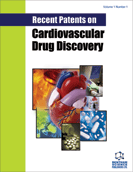Abstract
It had already showed that several thromboxane A2 receptor (TP receptor) antagonists might be utilized in the treatment of cardiovascular diseases. In addition, recent reports suggested that TP receptor antagonism may be able to restrict vascular inflammation in atherosclerotic vessels. In particular, S18886 has been developed as a non-prostanoid TP receptor antagonist derived from sulotroban that is characterized by a tetrahydronaphthalene ring as a spacer between the 4-cholophenylsulfonamide group and carboxylic acid. Several reports using experimental animal models of atherosclerosis indicated that S18886 caused a regression of advanced atherosclerosis. More recently, several studies and patents showed that new thromboxane modulators combined with another pharmacological activities have been developed. Ohtake et al. discovered TRA-418 (a benzene-condensed heterocyclic derivative) having a TP receptor antagonistic activity and a prostaglandin I2 receptor agonistic activity. Cesagrande found that 4-methyl-N- (4-transnitrooxycyclohexyl)- N-(3-pyridinylmethyl)-1,3- benzenedicarboxamide is endowed with anti-thromboxane and NO-donor actions. Oketani et al. discovered that E3040, a novel benzothiazole derivative, inhibited TXA2 synthase and 5-LO activities. EK112, a combined angiotensin II and TP receptor antagonist, was developed. These new compounds may be able to restrict further infiltration of inflammatory cells in atherosclerotic vessels, thus stabilizing vulnerable plaques in the related cardiovascular diseases.
Keywords: Atherosclerosis, Thromboxane A2 receptor, adhesion molecules, chemokine, macrophage accumulation, F2-isoprostane
 2
2


